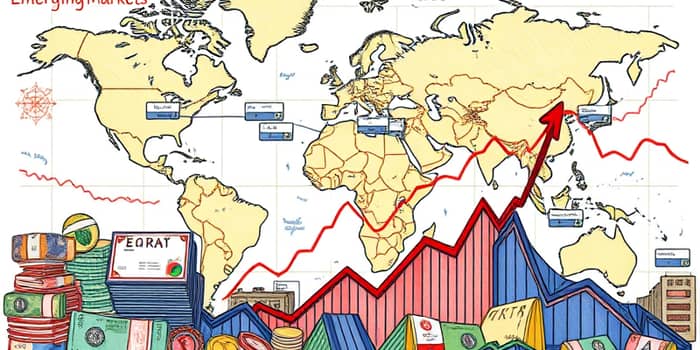
Emerging market debt has emerged as one of the most dynamic areas in fixed income, offering both opportunity and complexity. In a world where global growth and policy shifts collide, investors must learn to navigate a landscape defined by volatility, yield potential, and cross-border capital flows.
Understanding the nuanced interplay of macro trends, credit fundamentals and political developments is essential for building resilient portfolios. This guide dissects the core risk factors in emerging market (EM) debt and provides practical strategies to assess and manage exposure during 2024–2025.
After years of heightened rates and supply shocks, the EM debt universe benefits from a more balanced backdrop. Central banks in many advanced economies are shifting to accommodative stances, while inflation shows signs of moderation.
Overall, the Morningstar Emerging Markets Sovereign Bond Index has gained approximately 1% year-to-date and 6% since early 2024 in USD terms. This performance underscores the potential for returns in a diversifying allocation.
While the macro picture looks constructive, EM debt carries distinctive risks that can materialize rapidly. Investors should be vigilant about the following elements:
Each of these risk factors interacts with both global and domestic variables, requiring an integrated view to evaluate potential outcomes.
Emerging market debt broadly splits into hard-currency (USD, EUR, GBP) and local-currency issuance. Each category presents its own trade-offs:
Hard-currency EM bonds often appeal to investors seeking yield enhancement with greater diversification, while local-currency debt can benefit from currency appreciation during risk-on cycles.
EM exposures are not monolithic. Commodity exporters, manufacturing hubs and tourism-driven economies each face unique pressures:
1. Commodity price swings can boost or erode sovereign revenues and corporate cash flows. Oil-exporting nations may see improved standings when energy prices recover, while import-reliant countries suffer.
2. Trade policy matters: countries deeply integrated into value chains may weather US-China tensions better if they can redirect flows to alternative markets.
3. Political events—such as elections, regulatory overhauls or sudden policy pivots—can trigger rapid yield shifts. Staying abreast of legislative calendars and policy signals is critical to avoid unpleasant surprises.
Allocating to EM debt requires a disciplined approach. Below are actionable steps to balance risk and return:
• Conduct rigorous country sensitivity analyses to gauge exposure to external shocks like tariff changes or currency swings.
• Rotate between hard-currency and local-currency allocations in line with dollar cycles and rate differentials.
• Lean on active management to exploit credit upgrades and relative value opportunities within the EM spectrum.
• Use duration overlays and currency hedges selectively to mitigate pronounced rate and FX risks without fully sacrificing yield.
• Maintain adequate diversification across issuers and sectors to prevent idiosyncratic events from derailing portfolio performance.
• Monitor liquidity conditions and have contingency plans for managing large inflows or outflows during sudden market shifts.
Emerging market debt offers a compelling opportunity set, shaped by attractive yields and diversified drivers of return. However, realizing its full potential demands a thorough understanding of the intertwined risk factors that can influence performance.
By staying informed on macro trends, employing robust risk management tools and adopting a selective, research-driven approach, investors can harness the rewards of EM debt while navigating its inherent complexities. Equipped with these insights, portfolio managers and individual investors alike can build more resilient, return-oriented strategies in the ever-evolving world of emerging markets.
References













